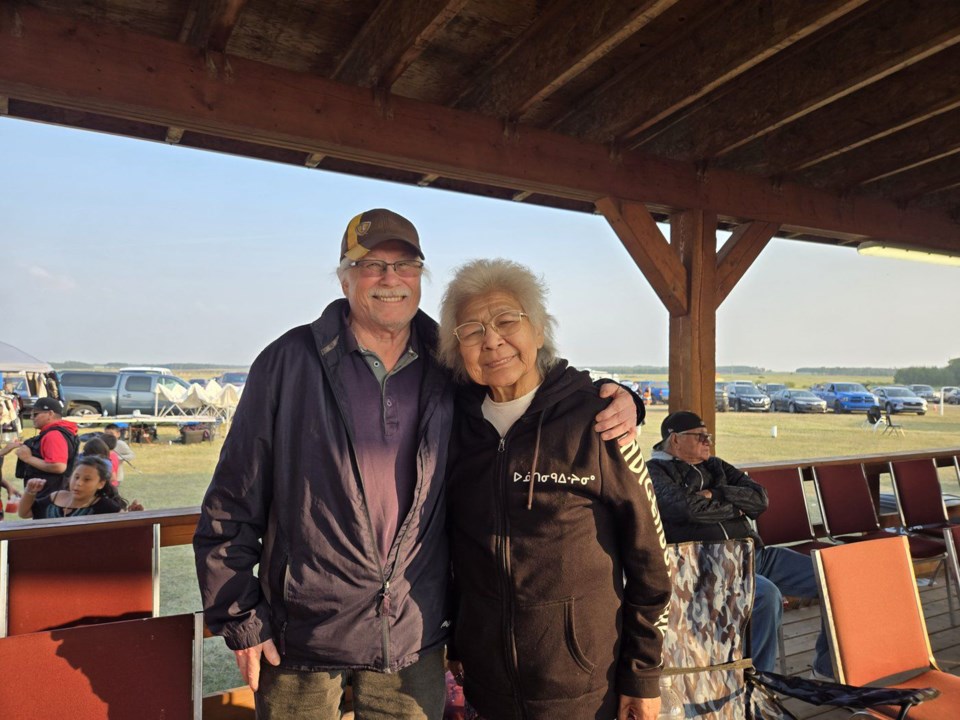COWESSESS FIRST NATION — Cowessess elder Lillian Lerat made a surprising discovery while researching her family tree — she is 99.6 per cent Indigenous.
Born Lillian Assiniboine in 1945 on the Ochapowace First Nation, to Frank Assiniboine and Alice Louison. She has lived through and experienced many changes in the province.
Her great-grandfather Possimosis (Little Assiniboine) was an original member of the Chakachas band, which was reinstated as a First Nation earlier this year.
Lillian always had a fairly good grasp of her maternal lineage, but had questions about her paternal side.
“I was very puzzled about it," she said. "Possimosis had two sons Charlie and Jimmy Assiniboine. His girls, that's what I don’t know. He had one daughter married in Piapot, one daughter in Kawacatoose and another in Rocky Boy (Mont.).”
Lillian married into the Cowessess First Nation and that's how she connected with Dean Lerat, an RCMP officer and amateur genealogist.
As a hobby, he helps people build their family trees through DNA testing and archival research.
“I found out what he was doing and I asked him to help me,” said Lillian who was somewhat surprised by her results.
Dean has gathered DNA from elders who have 100 per cent Indigenous ancestry.
A reason why this is even possible is because people from Lillian’s generation grew up in an era of segregation. The Pass System was in place, there were First Nation-only elementary and high schools, and healthcare was limited to Indian Hospitals, TB sanatoriums or whatever medicines the farm instructor or Indian agents dispensed.
“When I was a baby I was on my deathbed, I had double pneumonia,” she said. “I guess the doctor sent me home, to die.”
Her mother refused to give up and turned to traditional methods.
Lillian's aunt Elizabeth said she would help, but said she had to keep her.
“That’s what my aunt did; she raised me until I was about four years old,” Lillian said. “I couldn’t speak English. I spoke Saulteaux because that’s what my aunt spoke.”
When she returned to her parents she got to know her grandfather Charlie.
“My parents lived with my dad’s sister and that’s where my grandfather lived,” said Lillian. “He didn’t wear clothes. He wore an atashion, an apron kind of like a blanket. He would go outside in the wintertime like that, nothing on top.”
Lillian has fond memories of her old grandfather. She recalled how the children would line up to kiss him good night and he would then give them each a candy.
He died around 1950 at the age of 108.
Her connection to her kind and gentle old grandfather runs deep. Not only was she named after Charlie’s wife Lillian Nowekeseswape, he gave Lillian the name nanahow quanewisk which means straightening of the wings or feathers when she was deathly ill.
The name aptly describes Lillian because she’s picked herself up and straightened her wings a few times.
When she was 12, she was sent to the Prince Albert Residential School. Nearly 400 kilometres away from home.
“It was one of the lowest moments of my life when I had to take the train to Regina and mom came with me and from there I had to take another train going north to Prince Albert,” said Lillian. “I happened to sit by the window and I looked out and I seen my mom standing there and she was crying.”
The year she spent in Prince Albert was traumatizing.
“It is where I first felt discrimination because I was Saulteaux and everyone else was Cree,” said Lillian. “They called me moniyaw because I didn’t speak their language.”
The loneliness was unbearable, and she was glad to leave but the following years weren't much better.
Lillian was sent to Assiniboia, Moose Jaw and Regina for school and had to board away from home. She finally quit in Grade 10 and went home. As an adult, she received her high school equivalency.
The federal government recently settled a class action for the Indian It was a program created by the federal government where children from First Nations communities and Inuit villages were placed in other communities and often stayed in private family homes to attend school. Many children in these homes suffered harassment, abuse, loss of language and culture, and other harms.
Through the litigation process, plaintiffs sought compensation, recognition, and justice for their experiences and harm suffered.
Due to overcrowding, children were shipped to any residential school or private home in Canada.
As a child, Lillian was never told why she had to be alone or why she had to travel so far away for school. During this time, the Indian agent or federal government made all decisions regarding the education of school-age children.
Since beginning her research, Lillian noticed how frequently surnames were changed. Her mom received the last name Peters when she went to school, while her aunt was given the last name Peterson and their brother’s last name was Shavetail.
“Why they gave them different names, I don’t know why,” she said.
Tracing her family tree is not easy but she's determined to record it for her children and grandchildren because it's important.




